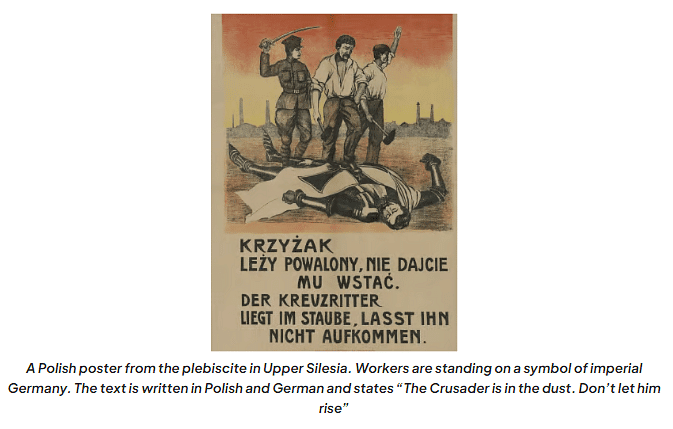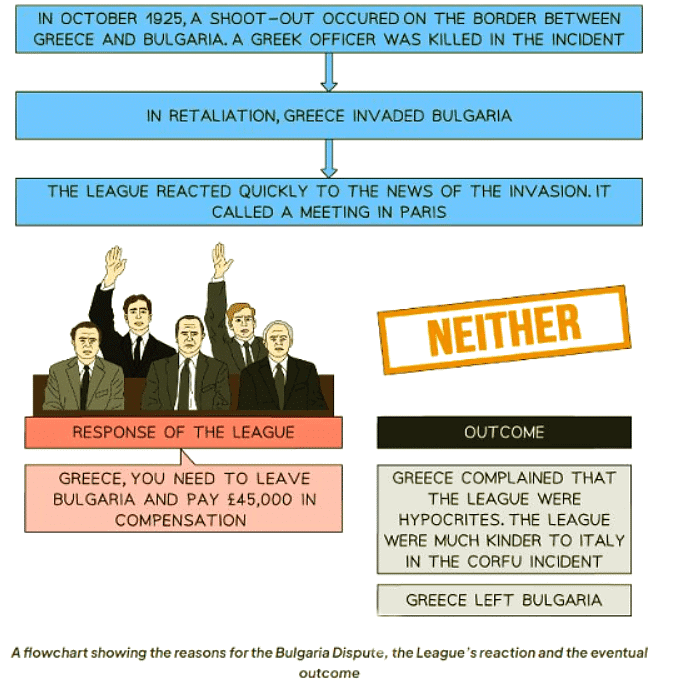Class 10 Exam > Class 10 Notes > History for GCSE/IGCSE > The League of Nations Attempts at Peacekeeping in the 1920s
The League of Nations Attempts at Peacekeeping in the 1920s | History for GCSE/IGCSE - Class 10 PDF Download
| Table of contents |

|
| Aims and Methods of Peacekeeping |

|
| Vilna, 1920 |

|
| Aaland Islands, 1920–1921 |

|
| Upper Silesia, 1921 |

|
| Corfu, 1923 |

|
| Bulgaria, 1925 |

|
Aims and Methods of Peacekeeping
- Following the Versailles Settlement, multiple border disputes arose as a consequence.
- The dissolution of the Ottoman and Austro-Hungarian empires led to the emergence of new nations such as Poland, which resulted in territorial adjustments, diminishing the power of countries like Germany and Austria.
- The Allies' delineation of new borders stirred international tensions and conflicts along these borderlands.
- Some nations resorted to invading others in pursuit of expanding their territories.
Collective Security
- Article 10 of the Covenant of the League of Nations emphasized 'collective security,' signifying that an attack on one member would be considered an attack on all.
- The League could mobilize a unified army to defend a member state against aggression.
Peacekeeping Methods
- Collective security aimed to foster a sense of security among member nations and serve as a deterrent to war.
- Other peacekeeping strategies included:
- Moral condemnation: Express disapproval of actions through influence.
- Trade sanctions: Impose trade embargoes on belligerent nations.
- Compensation: Require the aggressor to compensate the victimized nation financially as an apology for their actions.
- Utilization of the Conference of Ambassadors: An organization overseeing the Versailles Settlement, comprising representatives from Britain, France, and Japan, working in collaboration with the League to settle disputes.
- Plebiscites: Allow the inhabitants of a contested region to determine their governing authority.
- Non-intervention: In certain instances, such as the French invasion of the Ruhr, the League refrained from interference.
League's Peacekeeping Outcomes
- The League's efforts to maintain peace in Europe yielded varied results, reflecting a mixed track record in resolving conflicts and preventing war.
Vilna, 1920

Significance of the Vilna Dispute
- Undermining League's Authority: This event weakened the League of Nations' credibility and effectiveness.
- First Appeal for League's Assistance: Vilna marked the initial instance of an invaded nation seeking the League's intervention.
- Failure of Collective Security: The League's inability to uphold its commitment to collective security was evident.
- Reluctance of Permanent Members: Permanent members hesitated to mobilize a joint army, showcasing their reservations.
- French-Polish Relations: France's reluctance stemmed from its desire not to antagonize Poland, viewed as a potential ally.
- British Caution: Britain refrained from unilateral action, opting to act in unison with other League members.
Aaland Islands, 1920–1921

Significance of Aaland Islands Dispute
- One of the major achievements of the League of Nations
- When both parties respected the League of Nations:
- They sought the League’s assistance in resolving their conflict
- Agreed to abide by the League’s decision
Upper Silesia, 1921

Significance of the Upper Silesia Dispute
- Originally, the Upper Silesia dispute marked a victory for the League of Nations. Both involved nations agreed to abide by the League's decision.
- As the League's intervention concluded in 1925, tensions escalated between Poland and Germany. Poland contended that despite half of Upper Silesia's population being Polish, they were allocated only one-third of the territory. Conversely, Germany protested that the settlement deprived them of a quarter of their coal mines.

Corfu, 1923

Significance of the Corfu Dispute
- Without the presence of the USA, the League found it challenging to oppose dominant nations like Italy.
- Britain and France opted to steer clear of the conflict, allowing Mussolini to strong-arm the League into compliance.
- This incident established a precedent for other aggressive leaders to exploit the League for their own gains.
- It underscored that entities such as the Conference of Ambassadors could nullify decisions made by the League.
Bulgaria, 1925

Significance of the Bulgaria Dispute
- Highlighted the inconsistencies in the League of Nations' decisions.
- Both the Corfu and Bulgaria disputes involved the death of a military officer and led to armed invasions.
- The League failed to penalize Italy for invading Corfu but penalized Greece for invading Bulgaria.
- Revealed the League's reluctance to upset certain nations, affecting its impartiality.
- This partiality damaged the League's credibility as a peacekeeping entity.
- Comparison of Corfu and Bulgaria Disputes:
- Both conflicts resulted in the death of a military officer and triggered armed invasions.
- The League's response differed: it didn't sanction Italy for Corfu but did so for Greece in Bulgaria.
- Common Elements in Both Disputes:
- Both incidents involved the death of a military officer.
- They culminated in one country invading another.
The document The League of Nations Attempts at Peacekeeping in the 1920s | History for GCSE/IGCSE - Class 10 is a part of the Class 10 Course History for GCSE/IGCSE.
All you need of Class 10 at this link: Class 10
|
81 videos|88 docs|18 tests
|
FAQs on The League of Nations Attempts at Peacekeeping in the 1920s - History for GCSE/IGCSE - Class 10
| 1. What were the aims and methods of peacekeeping by the League of Nations in the 1920s? |  |
Ans. The League of Nations aimed to maintain international peace and security through collective security, arbitration, and disarmament. Its methods included negotiations, economic sanctions, and military action if necessary.
| 2. How did the League of Nations respond to conflicts such as the Vilna crisis in 1920? |  |
Ans. The League of Nations attempted to resolve the Vilna crisis through negotiations and mediation between Poland and Lithuania. However, it ultimately failed to prevent the conflict from escalating.
| 3. What were the effects of drawing new boundaries post-World War I on peacekeeping efforts by the League of Nations? |  |
Ans. The drawing of new boundaries post-World War I led to the creation of new states and territorial disputes, which posed challenges for the League of Nations in maintaining peace and resolving conflicts.
| 4. How did the League of Nations promote collective security among its member states? |  |
Ans. The League of Nations promoted collective security by encouraging member states to work together to prevent aggression and resolve conflicts peacefully through diplomatic means, economic sanctions, and, if necessary, military action.
| 5. What role did the Covenant of the League of Nations play in shaping its peacekeeping efforts in the 1920s? |  |
Ans. The Covenant of the League of Nations outlined the principles and procedures for maintaining international peace and security, guiding the League's peacekeeping efforts and decision-making processes during the 1920s.
Related Searches














